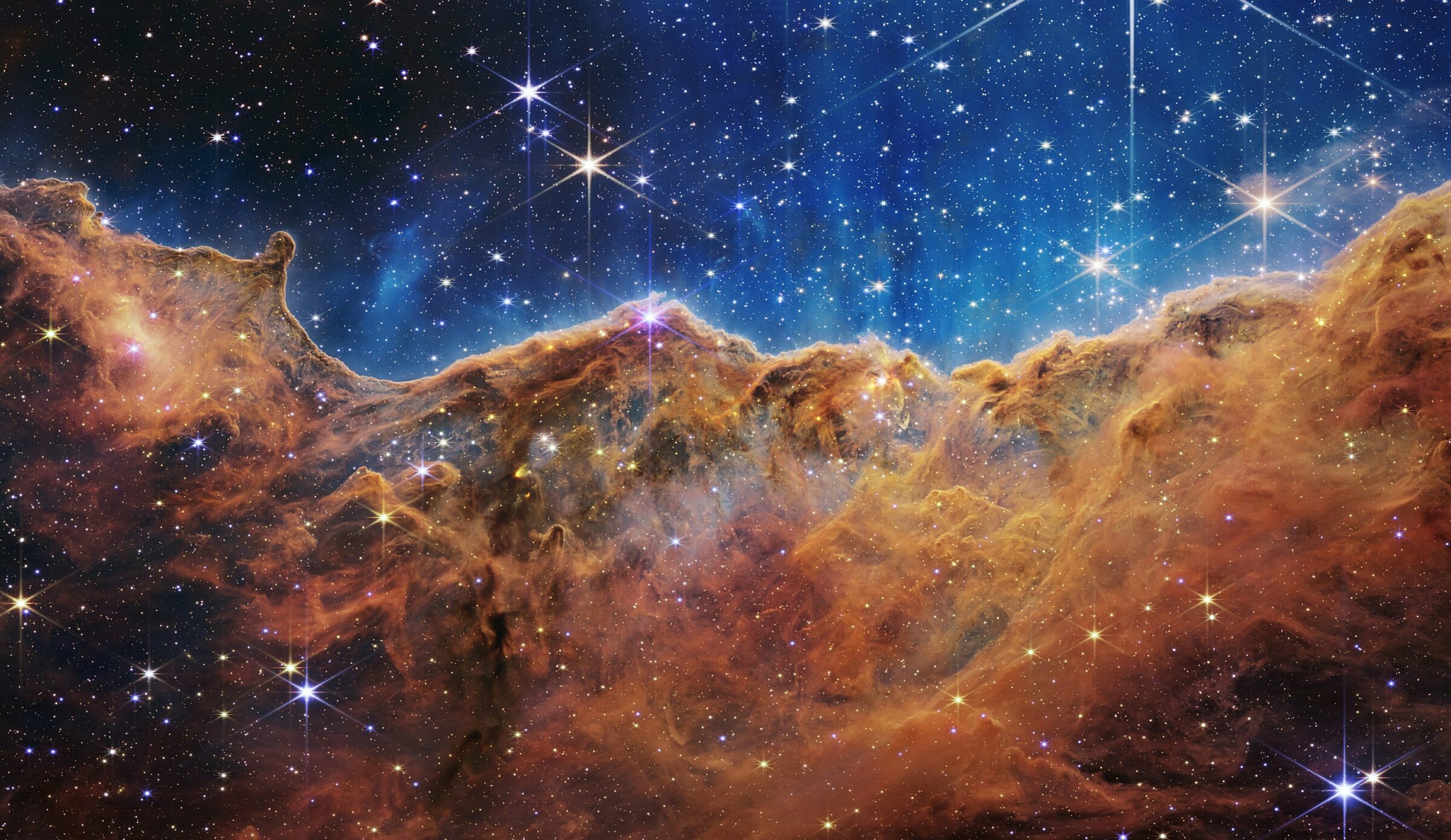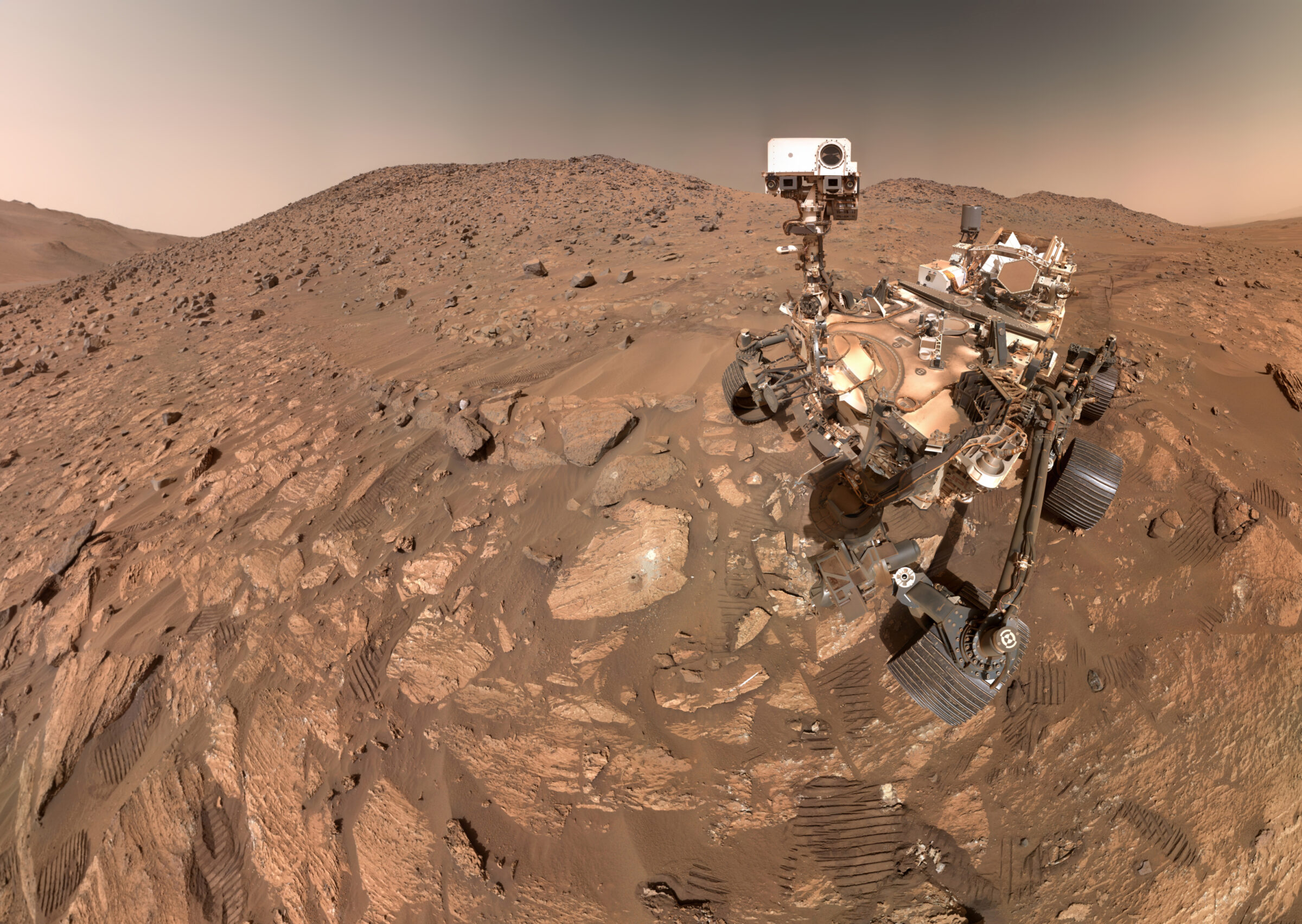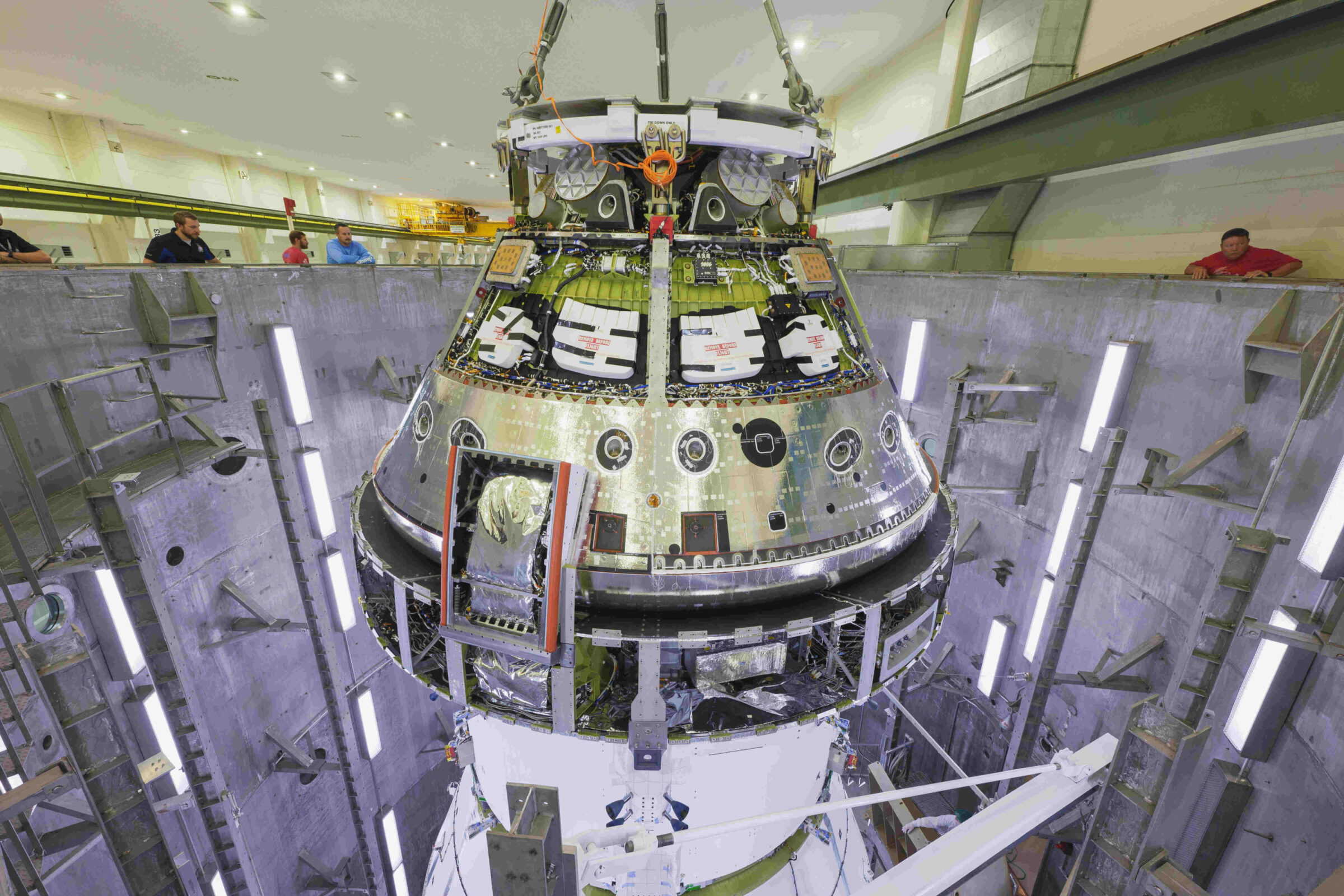Casey Dreier • Jan 20, 2025
Space Recommendations for the Second Trump Administration
Our recommendations are also available to download as a PDF.
The Trump Administration will inherit NASA at a crossroads: while the U.S. space agency continues to lead the world in ambition and capability, its continued preeminence is not guaranteed. Although programmatic corrections are necessary, we believe the fundamental strategy for exploration is sound, providing NASA with a strong foundation for the years ahead.
NASA’s Artemis program is the nation’s most serious lunar exploration effort since Apollo. And even though technical challenges remain, the United States’ commitment to a sustained lunar presence has already yielded a global coalition of scientific, commercial, and national actors committing tens of billions of dollars toward supportive lunar exploration and development. Meanwhile, the Artemis Accords have been signed by more than 50 nations united by a vision of peaceful lunar exploration.
NASA’s five scientific divisions have clear program priorities outlined by their respective decadal survey reports, prepared every ten years by the National Academies of Sciences, Engineering, and Medicine. Taken as a whole, these recommend a historic investment in ambitious, boundary-pushing scientific investigation.
Furthermore, the United States’ vibrant commercial space sector is the envy of the world. Thanks to decades of investment by NASA, a new generation of private and commercial companies is creating a new space economy, the limits of which are still being tested.
And despite the partisanship dividing the nation, NASA still enjoys broad congressional support and is among the most popular agencies in government, second only to the postal service. The public continues to support U.S. leadership in space and is particularly excited about scientific exploration and planetary defense — two areas of unique capability within NASA. The space program thus presents a real opportunity to unite the nation behind shared goals for peaceful exploration.
However, NASA is clearly struggling to deliver on its current commitments. All major components of Artemis have either increased in cost, been delayed, or both; NASA’s science directorate is struggling under budgets and growing costs that have already delayed most of its next-generation science and exploration projects. Furthermore, the agency’s workforce, management, and infrastructure suffer from various interconnected challenges due to underinvestment and lack of focus, which will require strong leadership and vision to address.
Given these challenges and opportunities, The Planetary Society offers the following recommendations to the incoming Trump Administration:
Implement a vision and timeline for exploration and scientific discovery.
Embrace NASA’s unique abilities in science and human spaceflight.
Get NASA back on track to making revolutionary discoveries in the space sciences.
Demand the best performance from NASA’s civil service, contractors, and commercial partners.

1. Implement a vision and timeline for exploration and scientific discovery
NASA lacks an executable, long-term exploration strategy. Consequently, the agency cannot make efficient decisions in the near term for investments in technologies, techniques, program development, infrastructure, and mission execution. The lack of a defined strategy with timelines (or, at minimum, relative benchmarks) makes it impossible for Congress, industry, and the public to assess NASA’s progress and understand the agency’s budgetary, workforce, and procurement needs.
- Maintain strategic continuity. NASA’s immediate goals are well-defined and enjoy broad political support. This was hard-earned. NASA should not abandon its commitment to sustained lunar presence or its science projects that are already in development. Instead, the agency should look for ways to improve the execution of this strategy and secure political support for its long-term goals for exploration.
- Scientific discovery is a lodestar for exploration. Scientific questions provide an enduring motivation for exploration beyond Earth. They exist independently from national and international political trends and movements, are relevant across cultures and societies, and outlast market cycles. Integrating science into every exploration effort ensures that those efforts remain of value to the public over time.
Tell the American story of adventure and discovery. NASA’s triumphs belong to everyone. The Administration should harness that inspirational power of space exploration to unify the nation and inspire new generations of scientists, engineers, and entrepreneurs.
2. Embrace NASA’s unique abilities in science and human spaceflight
As a public agency, NASA has a unique responsibility to the taxpayers and the nation that enables its existence, and we recommend investing primarily in what makes NASA unique:
- Lead a global coalition of allies and partners into space. As evidenced by the Artemis Accords, NASA’s human spaceflight projects can drive global cooperation and enhance America's standing in the world. They drive economic investment by both private and public space organizations and establish the nation as a reliable leader in peaceful space activity.
- Integrate science into human spaceflight goals. Robotic science missions to the Moon and Mars can meaningfully contribute to human exploration needs. Mars Sample Return, in particular, can demonstrate key technologies for landing and launch from the surface. Likewise, Artemis campaigns can address high-priority lunar science outlined in the decadal survey, when such goals are incorporated into the mission design process.
- Maximize public and political buy-in. Scientific discovery is a unifying, nonpartisan pursuit that resonates with both budget-conscious policymakers and the public’s sense of wonder. Every state and almost every congressional district receives some level of funding from NASA grants and contracts. NASA’s scientific work and the engineering and technology that support it, selected through open competitions, expand human knowledge, and open new lines of questioning for future exploration efforts. Integrating science into human spaceflight expands that base of support.
- Do what private industry cannot. Fundamental science and exploration are firmly in the domain of public responsibility. While commercial and industry partners are part of NASA’s toolset, only the public sector can assume the financial and programmatic risk inherent to novel exploratory activities.
Invest in training the scientific, engineering, and technical workforce. NASA missions provide both motivation and financial support for scientists, engineers, and their students via academic institutions around the country. NASA’s space grant program operates in every state and U.S. territory, and the agency’s scientific, engineering, and technology grants enable cutting-edge research across the country. These are investments into a strategic national workforce comprised of high-tech, high-skilled, and forward-thinking workers and researchers.

3. Get NASA back on track to making revolutionary discoveries in the space sciences
Unlike human spaceflight, there are fewer options to reduce the costs of cutting-edge scientific missions via commercial services contracts. NASA’s science missions are question-driven, motivated by the goal of answering some of the most compelling scientific unknowns. There is no off-the-shelf James Webb Space Telescope or Perseverance Mars rover. Such projects require specialized, custom-made instrumentation, highly trained scientific and technical know-how, and finely tuned spacecraft designed to thrive in extreme environments, from the sulfurous atmosphere of Venus to the distant ice giant of Uranus.
Enabling fundamental scientific research is a strategic investment by governments to ensure progress in the health of their citizens and their societies, spur economic growth, and instigate technological progress. Scientific exploration and discovery ensure the continued refinement and validation of theories about our origins, our planet, and life itself. Space science is among NASA’s most extraordinary contributions to the nation.
NASA currently has more than 140 science missions in operation or development. But recent spikes in inflation and budget cuts have resulted in more than one billion dollars of lost buying power for NASA’s Science Mission Directorate since 2020, severely stressing the agency’s ability to deliver on its current commitments, much less begin the next generation of scientific missions.
A slate of bold and ambitious projects, such as the Habitable Worlds Observatory, a mission to orbit Uranus, and the final leg of Mars Sample Return, struggle to advance beyond early concepts.
- Funding matters for science. The Planetary Society and other partners recommend returning the Science Mission Directorate budget to at least $9 billion, in line with pre-pandemic funding levels when adjusted for inflation.
- Continue to explore opportunities for commercial partners. Lunar payload delivery, Mars communications infrastructure, and other enabling technologies can help lower costs. A new generation of ultra-large rockets, such as Starship or New Glenn, reduces the need to miniaturize, fold, bend, and scrimp every gram of mass possible, potentially reducing complexity and cost. NASA should continue to embrace the capabilities provided by its commercial partners.
- Invest in next-generation technology. Ensure that NASA prioritizes enabling technologies necessary for the next decade’s missions. This includes instrument sensitivity, increased onboard computational power, better power systems, and enhanced mobility.
Experiment with higher-risk, lower-cost missions. As commercial technology and related supply chains mature, so do the possibilities for very low-cost science missions. While unlikely to enable boundary-pushing science, high-frequency, low-cost flight missions can prove out new systems and operational techniques, train new principal scientists and lead engineers, and collect novel data.

4. Demand the best performance from NASA’s civil service, contractors, and commercial partners
Over the last decade, commercial space companies have dramatically reduced launch costs, improved reliability, and spurred a new age of entrepreneurial energy. NASA’s future success hinges on forging closer alliances with these private partners — while preserving NASA’s core missions that only the government can undertake.
- Avoid duplicating commercial services: Where private industry thrives — cargo delivery, communications, low-Earth orbit operations — NASA should buy services. This will free up NASA’s resources for higher-risk ventures like deep-space propulsion, a sustained lunar presence, interplanetary exploration, and generation-defining space telescopes.
- Reward strong performance: Regardless of which contracting mechanism NASA decides to use, aerospace contractors should be held to high standards of performance. Poor performers must face consequences, not bonuses, and good performers should be rewarded with financial incentives and more work. Providing a service to NASA should be a privilege for any private company.
- Expand economic opportunity while preserving public capability. Commercial space partnerships boost domestic manufacturing, sustain high-paying jobs, and cultivate the next generation of skilled workers and innovators. A vibrant private sector also helps maintain America’s global edge in technology development. Public investment ensures that universities, research centers, and related intellectual infrastructure are in place to support such growth. They are complementary and inseparable, and NASA must ensure it supports both.
Closing
Taken together, these recommendations can help ensure a continued era of U.S. leadership in space exploration, revolutionary scientific discovery, and strong global alliances.
The myriad benefits to our economy and national interests of investing in space are well-established. However, there are additional benefits to society that, while harder to measure, are no less important.
Pursuing an adventurous and boundary-pushing space program injects energy, ambition, and innovation into our culture. It inspires the nation to solve wildly difficult hardware, software, and societal problems by creating new technologies and forging new ways of doing business. The data and imagery returned by our science missions compel us to integrate new information into our understanding and perceptions of the world, and stress-test the theories and models created in the limited experience of Earth alone. Space exploration provides natural areas to work with close allies and find common cause with all nations who share our values. Space is a vast realm of possibility for human achievement, exploration, and discovery. In short, the great effort demanded of society to achieve spaceflight, as well as the novelty of what we find there, invigorates and energizes that same society. The value of this is not to be dismissed.
The Planetary Society believes that by embracing a clear and unwavering commitment to exploration, discovery-based science, and the unique capabilities provided by public and private space sectors, NASA can help maintain leadership in technology, promote an open and inquisitive culture, and enable ongoing economic prosperity. We have a solid foundation from which to work. And by embracing the unique role of NASA and its responsibility to the nation, the path forward will endure for years to come.

Support our core enterprises
Your support powers our mission to explore worlds, find life, and defend Earth. You make all the difference when you make a gift. Give today!
Donate

 Explore Worlds
Explore Worlds Find Life
Find Life Defend Earth
Defend Earth

